Once upon a time a volcano rose along the western Caribbean coast after millennia of marine depositions building up. The new igneous cone, driven by the collision and subduction of the Cocos under the Caribbean tectonic plates, fragmented the earlier rocks into a jumbled landscape. Add in a few tens of millions of years of erosion, biology, hurricanes and decomposition and you end up with a landscape along the Caribbean coast with steep volcanic beaches slapped by strong waves and a fresh wind in front of a humid tropical forest straddling the many cracks now filled with water. Tortuguero is a 30+ mile spit of sand backed by wetlands and “canals” and overlaid by a rich, teeming tropical biotic landscape.
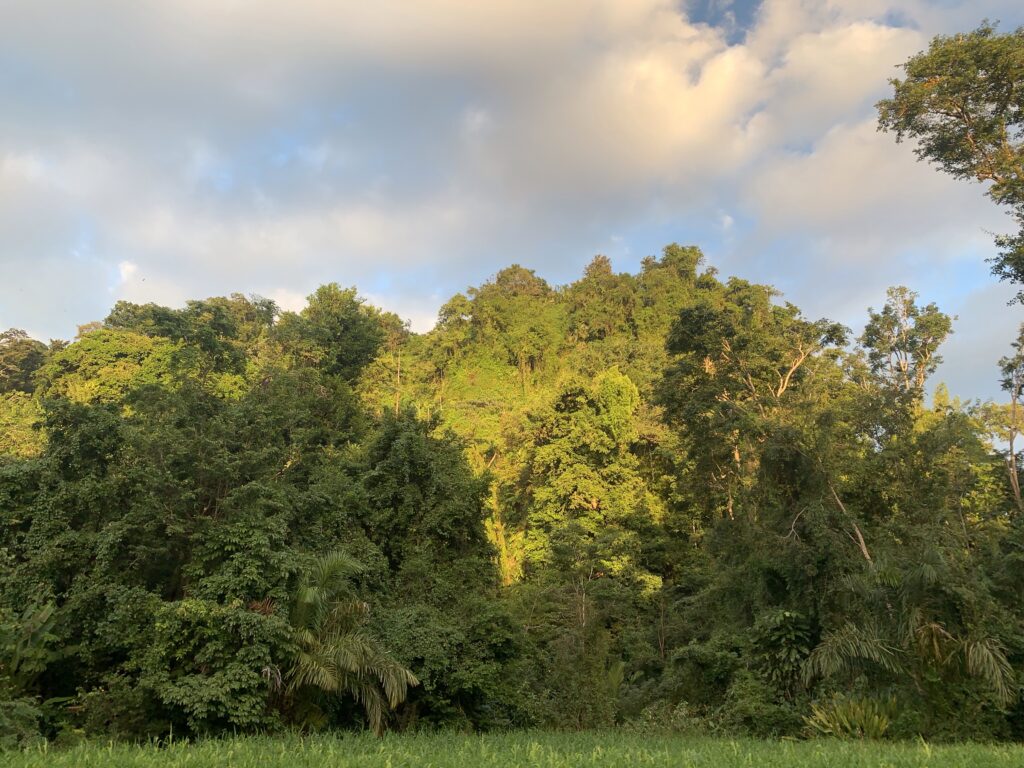
We visited for the night of January 7 and the morning of January 8, piling in to a boat for the last leg down a muddy river occupied by American crocodiles, caimans, and lots of egrets.

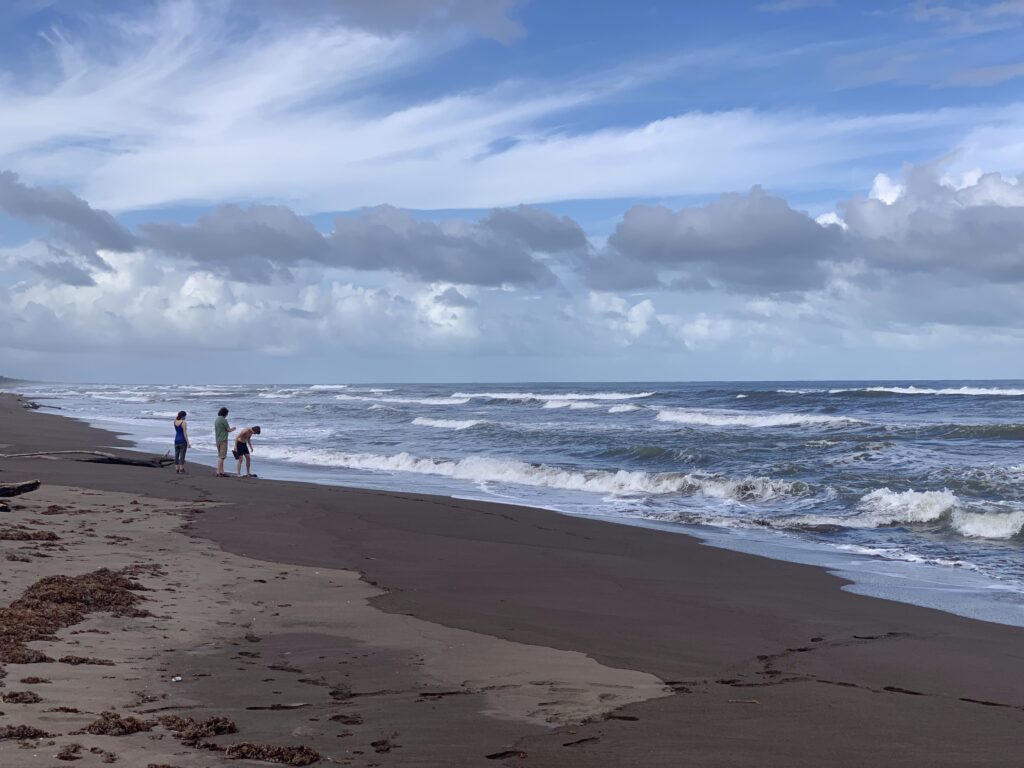
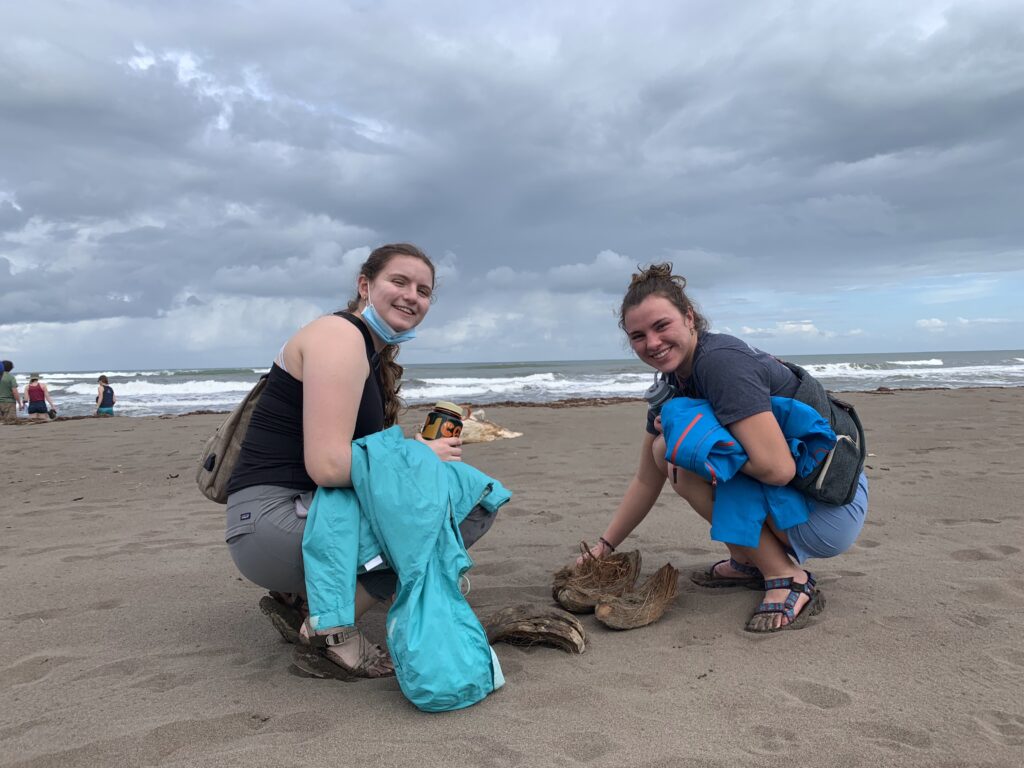
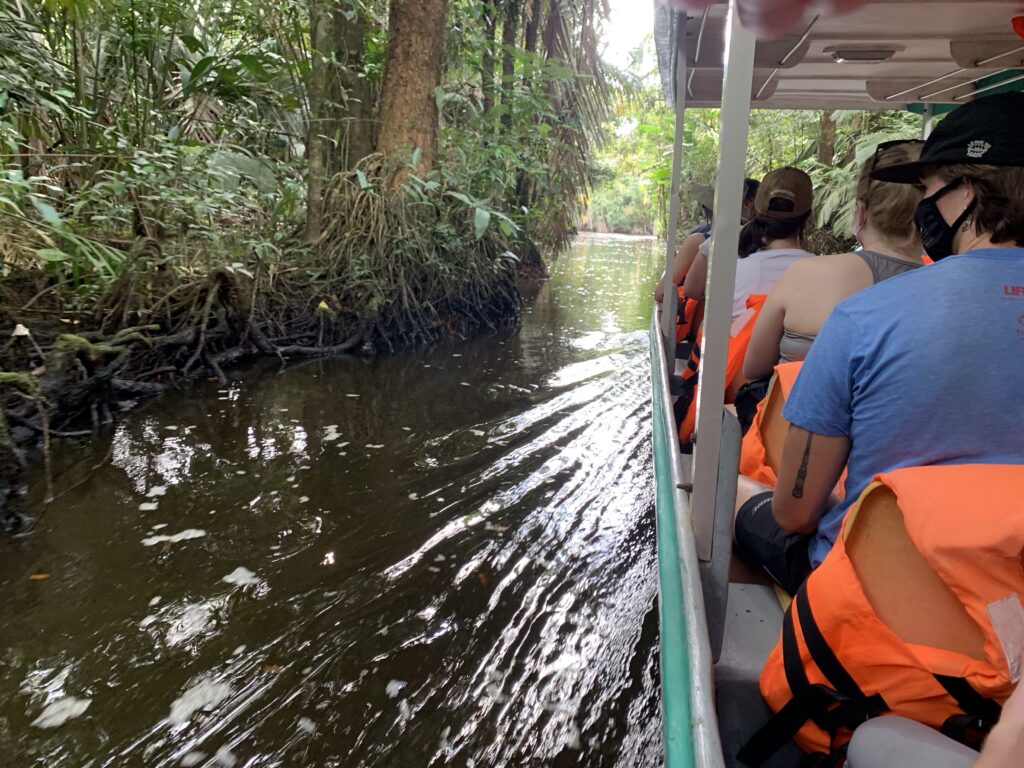
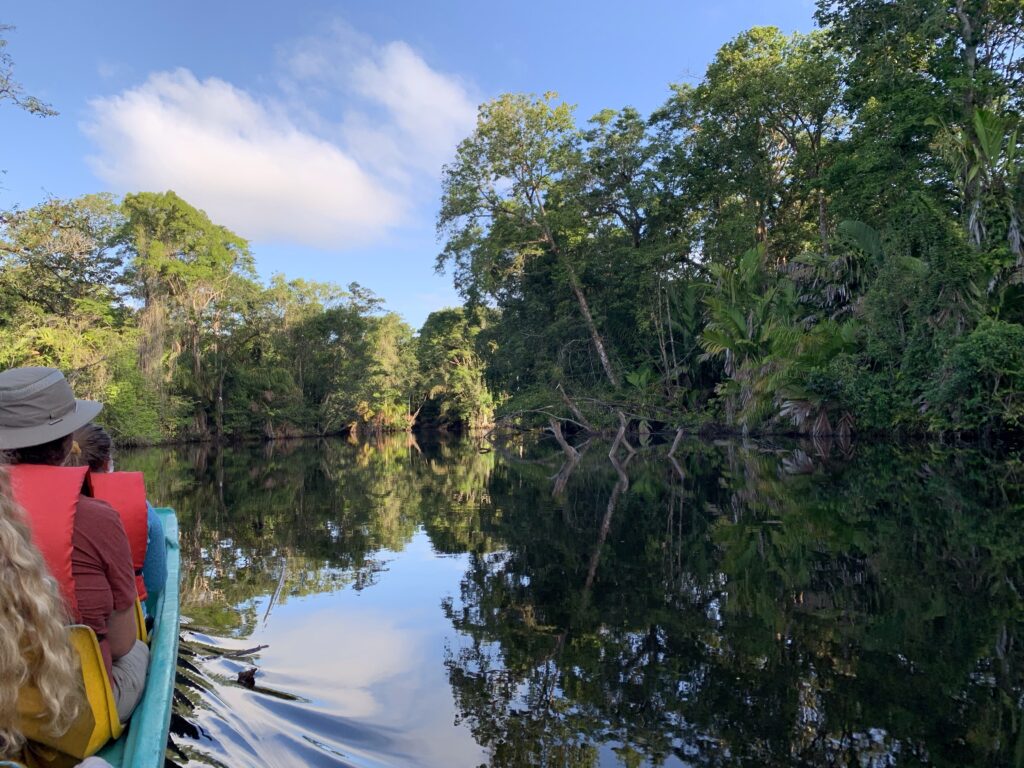
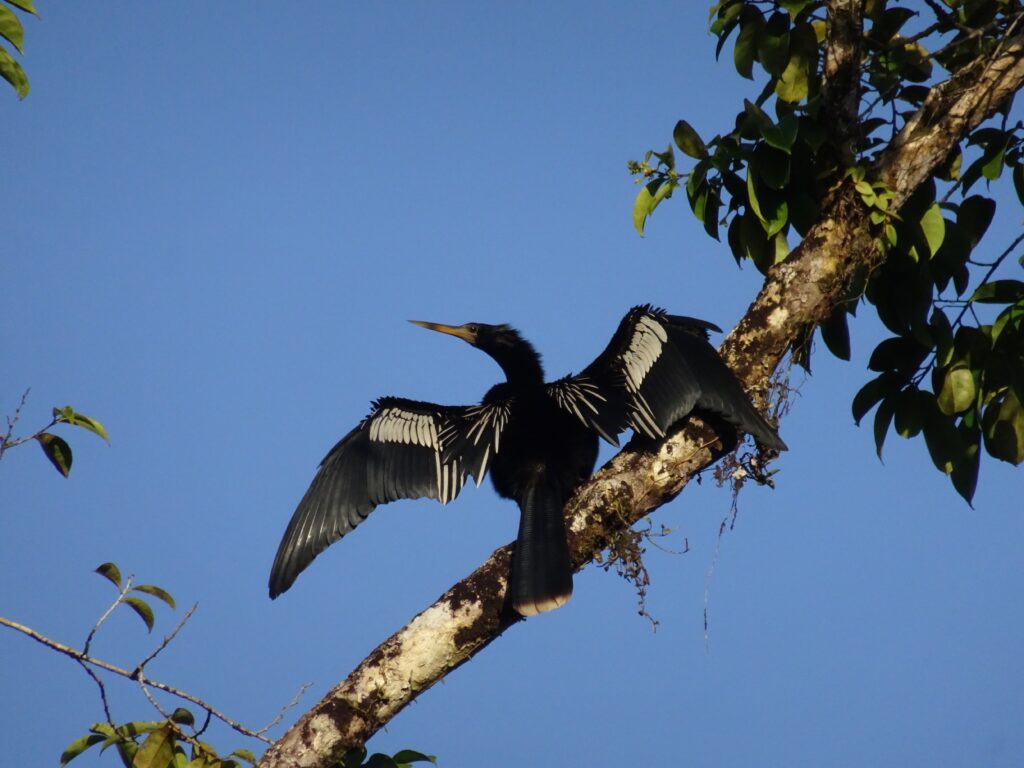
Tortuguero is known especially for its nesting sea turtles, mostly the huge numbers of Green sea turtles that come ashore to nest from about March to October. These turtles have temperature-dependent sex determination, meaning that the sex of the individual depends on how warm it is when it develops in the nest. A “good” nest will have both warmer (upper) and cooler (lower) areas, and thus will produce both female and male turtles. One concern with global warming is that the beaches will warm to the point that no male turtles will be produced. We’ll learn more about the plight of sea turtles when we visit the Pacific side of Costa Rica.